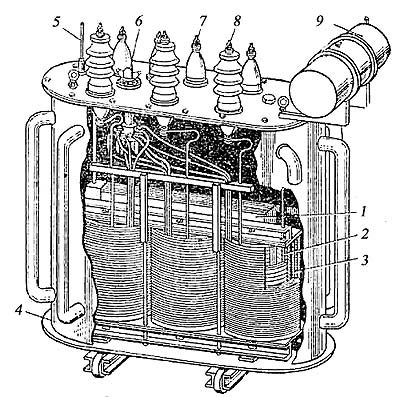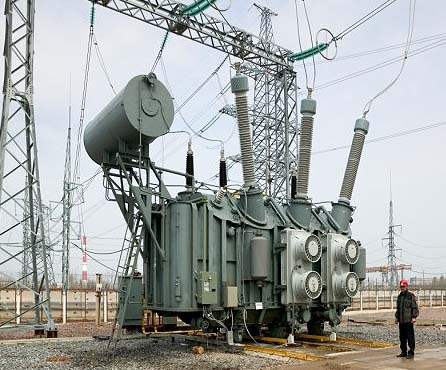-
1 авария с повреждением изоляции
авария с повреждением изоляции
—
[Я.Н.Лугинский, М.С.Фези-Жилинская, Ю.С.Кабиров. Англо-русский словарь по электротехнике и электроэнергетике, Москва]Тематики
- электротехника, основные понятия
EN
Русско-английский словарь нормативно-технической терминологии > авария с повреждением изоляции
-
2 авария с повреждением изоляции
Engineering: insulation fault, insulation-type faultУниверсальный русско-английский словарь > авария с повреждением изоляции
-
3 "дуговая" неисправность
"дуговая" неисправность
Неисправность, приводящая к возникновению дуги.
[Интент]Параллельные тексты EN-RU
An arc fault occurs when there is a reduction in the dielectric strength of the insulating means (air, in LV switchboards) interposed between two or more conducting elements at different potential.
The arc is generated at the moment when, due to the high ionization of the air, there is a breakdown of the dielectric of the medium and the consequent flow of the current through it.
In an arc fault the highest stresses are of thermal type and proportional to RaI2 owing to the high value taken by the arc resistance Ra; this because the fault current flows in a medium which is always insulating, even if extremely ionized.
Such stresses manifest themselves essentially in the form of:
• high thermal gradients caused by the quick and intense rise in the air temperature;
• high pressure gradients in the form of pressure wave;
• high ionization of the air with consequent reduction of its insulating strength.
Generally speaking, in a LV assembly designed and tested according to the Standard IEC 60439-1 an arc fault is not very likely to occur; however, should it occur, the consequences would be extremely harmful to both the equipment as well as the personnel (see Chapters 2.2 and 2.3).
The causes of an arc fault can be both technical as well as non technical; among the latter the most frequent are the following:
• personnel errors, above all during maintenance operations;
• installation operations not sufficiently accurate;
• inadequate maintenance, above all in the case of severe environmental conditions.
Among the technical causes of an arc fault in a LV assembly the following ones are to be remembered:
• breakdown of the insulation essentially in the proximity of the supports of the busbars and of the plug-in contacts of the withdrawable units (75% of cases);
• overvoltages generating disruptive discharges between the points at minimum clearances (15% of cases);
• constructional defects of the apparatus (10% of cases).
[ABB]К «дуговой» неисправности, относится неисправность, обусловленная уменьшением электрической прочности изолирующей среды (воздуха в НКУ) между двумя или более токоведущими частями, находящимися под разными электрическими потенциалами.
Дуга образуется в тот момент, когда вследствие высокой ионизации воздуха происходит пробой изолирующей среды, вследствие чего через нее начинает протекать электрический ток.
Проявлением дуговой неисправности, является тепловое воздействие, пропорциональное RaI2 и достигающее большого значения вследствие большого сопротивления дуги Ra.
Дело в том, что ток дуги протекает через среду, которая всегда является изолирующей, пусть даже и чрезвычайно ионизированной.
Указанные воздействия очевидны сами по себе особенно в форме:
• теплового градиента температуры, вызванного быстрым и интенсивным подъемом температуры воздуха;
• высоким градиентом давления в форме волны давления;
• высокой ионизацией воздуха с последующим уменьшением электрической прочности.
Вообще говоря, в НКУ, разработанных и испытанных в соответствии с требованиями стандарта МЭК 60439-1 «дуговая» неисправность маловероятна. Однако, если дуга все таки возникнет, ее последствия буду чрезвычайно тяжелыми как для оборудования, так и для персонала (см. п. 2.2 и 2.3).
Причина дуговой неисправности может носить как технический, так и нетехнический характер. Среди последних наиболее часто возникают следующие:
• ошибки персонала, совершаемые главным образом во время технического обслуживания;
• недостаточно аккуратное выполнение монтажа;
• ненадлежащее техническое обслуживание, главным образом при эксплуатации НКУ в тяжелых условиях окружающей среды.
Среди технических причин дуговой неисправности в НКУ необходимо помнить о следующих:
• пробой изоляции, особенно вблизи опор шин и втычных контактов выдвижных частей НКУ (75 % случаев);
• перенапряжения, вызываемые разрушительными электрическими разрядами между точками с минимальными зазорами (15 % случаев);
• конструктивные дефекты аппаратуры (10 % случаев).
[Перевод Интент]Тематики
- НКУ (шкафы, пульты,...)
EN
Русско-английский словарь нормативно-технической терминологии > "дуговая" неисправность
-
4 масляный трансформатор
масляный трансформатор
Трансформатор с жидким диэлектриком, в котором основной изолирующей средой и теплоносителем служит трансформаторное масло
[ ГОСТ 16110-82]
масляный трансформатор
Трансформатор, магнитная система и обмотки которого погружены в масло
(МЭС 421-01-14)
[ ГОСТ 30830-2002]EN
oil-immersed type transformer
a transformer of which the magnetic circuit and windings are immersed in oi
[IEV number 421-01-14]FR
transformateur immergé dans l'huile
transformateur dont le circuit magnétique et les enroulements sont immergés dans l'huile
[IEV number 421-01-14]Oil transformers
The magnetic circuit and the windings are immersed in a liquid dielectric that provides insulation and evacuates the heat losses of the transformer.
This liquid expands according to the load and the ambient temperature. PCBs and TCBs are now prohibited and mineral oil is generally used. It is flammable and requires protective measures against the risks of fire, explosion and pollution.
The most commonly used protective measures are the DGPT or the DGPT2: Gas, Pressure and Temperature sensor with 1 or 2 sensing levels on the temperature. This system cuts off the LV load (1st level) then the HV supply (2nd level) when there is a fault inside the transformer. A holding tank is used to recover all the liquid dielectric.
Of the four types of immersed transformer: free breathing transformers, gas cushion transformers, transformers with expansion tank and transformers with integral filling, only the latter are currently installed.
[Legrand]Масляные трансформаторы
Магнитная система и обмотки трансформатора погружены в жидкий диэлектрик, служащий изоляцией и теплоносителем.
Жидкий диэлектрик изменяет свой объем в соответствии с нагрузкой трансформатора и температурой окружающей среды. Поскольку в настоящее время применение полихлорированных дифенилов и тетрахлорбифенилов запрещено, то в основном используют минеральное масло. Оно огнеопасно, поэтому необходимо принимать меры против возникновения пожара, взрыва и загрязнения окружающей среды.
Как правило, применяются системы DGPT (одноуровневые системы, использующие датчики газа, давления и температуры) или DGPT2 – двухуровневые системы. В случае возникновения аномального состояния трансформатора данные системы отключают нагрузку цепей низшего напряжения (первый уровень защиты), а затем питание обмотки высшего напряжения (второй уровень защиты). Активная часть трансформатора находится в баке и полностью покрыта жидким диэлектриком.
Существует четыре типа масляных трансформаторов: трансформаторы с системой свободного дыхания, трансформаторы с газовой подушкой между зеркалом масла и крышкой трансформатора, трансформаторы с расширительным баком и трансформаторы с гофрированным баком. В настоящее время применяют только трансформаторы последнего типа
[Интент]
[http://www.ramo-chelny.ru/konschasti.html]Масляный трансформатор:
- Шихтованный магнитопровод
- Обмотка низшего напряжения
- Обмотка высшего напряжения
- Трубчатый бак
- Термометр
- Переключатель регулировочных отводов обмотки высшего напряжения
- Ввод (проходной изолятор) обмотки низшего напряжения
- Ввод (проходной изолятор) обмотки высшего напряжения
- Расширительный бак

[http://transfcomplect.narod.ru/transformator.html]Тематики
Классификация
>>>EN
DE
FR
Русско-английский словарь нормативно-технической терминологии > масляный трансформатор
-
5 резервуар СПГ
1) Sakhalin energy glossary: ammonia testing, earth fault of electrical equipment, earth path, flatness tolerance, frost heave of subsoil, inerting, insulation space, internal piping, nitrogen connection, over-fill prevention, pallet-type vacuum relief valve, pilot-operated pressure relief valve, purging against ice formation, radar type level gauge, roof nozzles, servo level gauge, stiffening rings, suspended deck, typical roof layout2) Sakhalin R: bottom and corner protection system, bottom slab, dome space
См. также в других словарях:
Exterior insulation finishing system — Exterior insulation and finishing system (EIFS) is a type of building exterior wall cladding system that provides exterior walls with an insulated finished surface and waterproofing in an integrated composite material system. Contents 1… … Wikipedia
Shunt fault — A Shunt fault is a type of fault that occurs in submarine communications cables.Many such cables use underwater repeaters or amplifiers to boost signals being passed along the cable. These repeaters or amplifiers are powered from either end of… … Wikipedia
авария с повреждением изоляции — — [Я.Н.Лугинский, М.С.Фези Жилинская, Ю.С.Кабиров. Англо русский словарь по электротехнике и электроэнергетике, Москва] Тематики электротехника, основные понятия EN insulation faultinsulation type fault … Справочник технического переводчика
Electrical wiring — in general refers to insulated conductors used to carry electricity, and associated devices. This article describes general aspects of electrical wiring as used to provide power in buildings and structures, commonly referred to as building wiring … Wikipedia
Earthing system — In sulvent systems, an earthing system defines the electrical potential of the conductors relative to that of the Earth s conductive surface. The choice of earthing system has implications for the safety and electromagnetic compatibility of the… … Wikipedia
Residual-current device — A two pole residual current device A Residual Current Device is a generic term covering both RCCBs and RCBOs. A Residual Current Circuit Breaker (RCCB) is an electrical wiring device that disconnects a circuit whenever it detects that the… … Wikipedia
AC power plugs and sockets — See also: Industrial and multiphase power plugs and sockets Plugs and sockets may sometimes combine male and female contacts, but t … Wikipedia
Dissolved gas analysis — or DGA is the study of dissolved gases in insulating fluid. [1] Insulating materials within transformers and related equipment break down to liberate gases within the unit. The distribution of these gases can be related to the type of electrical… … Wikipedia
Megger Group Limited — Type Private Industry Electrical power Founded 1889 Found … Wikipedia
National Electrical Code — The National Electrical Code, 2008 edition The National Electrical Code (NEC), or NFPA 70, is a regionally adoptable standard for the safe installation of electrical wiring and equipment. The NEC, while having no legally binding regulation as… … Wikipedia
Earth leakage circuit breaker — An Earth Leakage Circuit Breaker (ELCB) is a safety device used in electrical installations with high earth impedance to prevent shock.PurposeMany electrical installations have a relatively high earth impedance. This may be due to the use of a… … Wikipedia
